Literally If You’re New To Tumblr: Reblog Shit
literally if you’re new to tumblr: reblog shit
“it wont fit my aesthetic” make a sideblog. reblog to it.
“i hate tagging” don’t tag then. reblog it anyway.
“but my likes are public” ppl here dont fucking look at your likes. they dont do anything anyway. reblog it.
“you just want attention” jokes on you, I dont make shit anymore. I’m talking about other artists.
“it’s embarrassing” tumblr is an anonymous platform. make a sideblog if you’re too cowardly
“but on twitter its fine to have lurk accounts” well they suck ass here and are assumed to be bots. reblog.
More Posts from Absiesfeed and Others
Guys our community for Hinduism just got approved!!!

Reblog or slide into the replies for an invite!!
So excited for this!!!
Let’s reach all Hindus on tumblr!
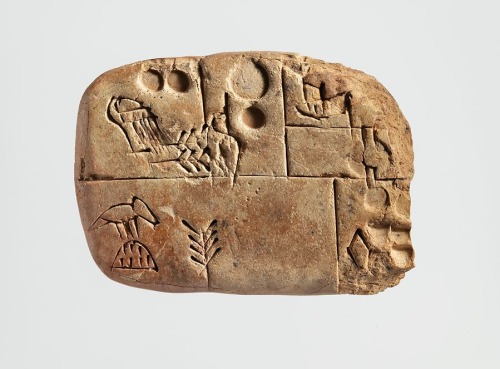
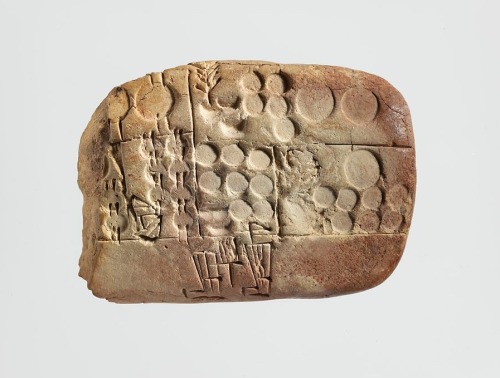
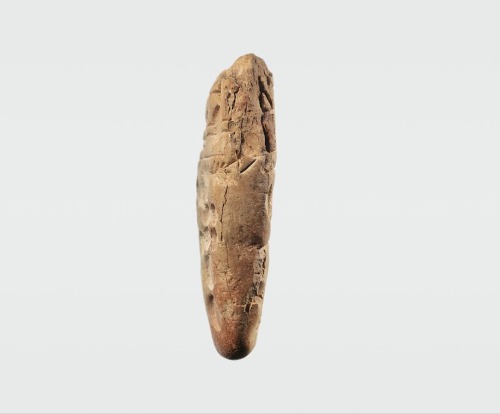
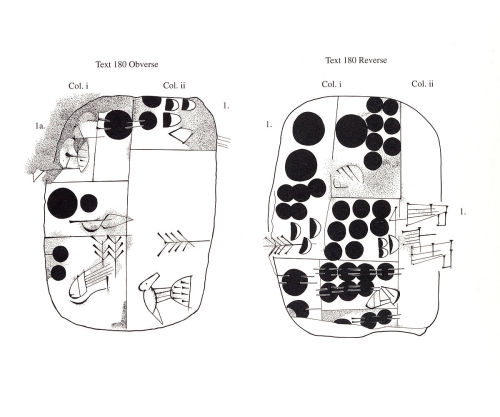
Sumerian cuneiform tablet (c. 3100 – 2900 BC). Administrative account recording the distribution of barley and emmer wheat. Probably from Uruk (Warka, Iraq).
The first system of writing in the world was developed by the Sumerians, beginning c. 3500 – 3000 BC. It was the most significant of Sumer’s cultural contributions, and much of this development happened in the city of Uruk.
A stylus was used to creat wedge-like impresssions in soft clay, and the clay was fired afterwards. The word “cuneiform” comes from the Latin cuneus, meaning “wedge”.
These wedge-like impressions were first pictographs, and later on phonograms (symbols representing vocal sounds) and “word-concepts” – closer to a modern-day understanding of words and writing. All the great Mesopotamian civilizations used cuneiform, including the Sumerians, Akkadians, Babylonians, Hatti, Hittites, Assyrians and Hurrians. Around 100 BC, it was abandoned in favour of the alphabetic script.
The earliest texts used proto-cuneiform, and were pictorial. Writing was a technique for noting down things, items and objects (e.g. Two Sheep Temple God Inanna). This system worked well for concrete, visible subjects, but could give little in the way of details. As subject matter became more intangible (e.g. the will of the gods, the quest for immortality), cuneiform developed in complexity to represent this.
By 3000 BC, the representations were more simplified. The stylus’ impressions conveyed word-concepts rather than word-signs – for example, the scribe could write about the more abstract concept of “honour”, rather than having to specifically depict “an honourable man”.
The “rebus” principle was used to isolate the phonetic (sound) value of a particular sign. Rebus is a device that combines pictures (or pictographs) with individual letters to depict words and/or phrases. For example, the picture of a bumblebee followed by the letter “n” would represent the word “been”. With the rebus principle, scribes could express grammatical relationships and syntax to clarify meaning and be more precise.
There are only a few examples of the use of rebus in the earliest stages of cuneiform (c. 3200 – 3000 BC). Consistent usage of rebus became apparent only after c. 2600 BC. This was the beginning of a true writing system, characterized by a complex combination of word signs and phonograms (signs for vowels and syllables).
By c. 2500 BC, cuneiform (written mostly on clay tablets) was used for a wide variety of religious, political, literary, scholarly and economic documents.
Now the reader of the tablet didn’t have to struggle with the meaning of a pictograph – they could read word-concepts that more clearly conveyed the scribe’s meaning. The number of characters used in writing was reduced from 1000 to 600, to make it simpler.
By the time of the famous priestess-poet Enheduanna (c. 2285 – 2250 BC), cuneiform had become sophisticated enough to convey not only emotional states such as love or betrayal, but also the reasons behind the writer’s experience of these states. Enheduanna wrote a collection of hymns to Inanna in the Sumerian city of Ur, and she is the first author in the world known by name.

Flamingos an aerial series
Lake Pulicat in India
BY RAJ MOHAN

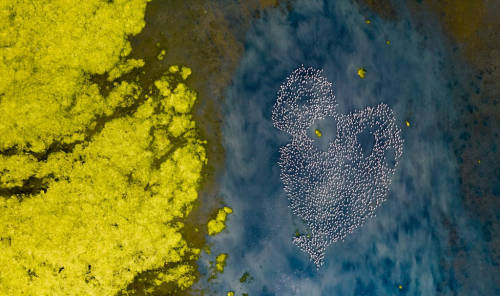












Bearth Deplazes - Schweizer-Schmid house, Ardez 2018. Photos © Gion von Albertini.

I laughed way too hard at this










Bearth Deplazes - Schweizer-Schmid house, Ardez 2018. Photos © Gion von Albertini.

At the very centre of the image above is something incredible - a single, positively-charged strontium atom, suspended in motion by electric fields.
Not only is this an incredibly rare sight, it’s also difficult to wrap your head around the fact that this tiny point of blue light is a building block of matter.
The image was captured by physicist David Nadlinger from the University of Oxford, and it’s been awarded the overall prize in the UK’s Engineering and Physical Sciences Research Council photo competition.
To give you a little perspective on the size of this set-up, the atom is being held in place by electric fields emanating from those two metal needles on either side of it.
The distance between them is about 2 millimetres (0.08 inch).
The atom is being illuminated by a blue-violet laser. The energy from the laser causes the atom to emit photons which Nadlinger could capture on camera using a long exposure.
The whole thing is housed inside an ultra-high vacuum chamber and dramatically cooled to keep the atom still. Nadlinger took this photo through the window of the vacuum chamber.
To learn more, click here.
NASA releases the clearest images of Neptune’s rings in over 30 years


For her


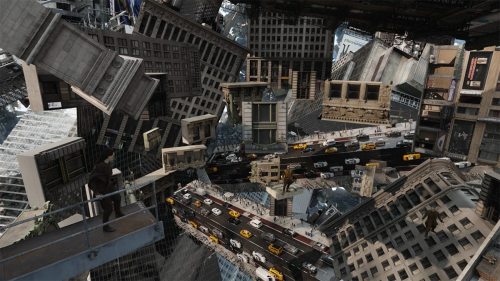


Marvelland



Mikael Hallstrøm Eriksen
Strata-34B
Watercolour on paper
13x20 cm.
Strata-37c
Watercolour on paper
30x40 cm
-
 bagoffat liked this · 2 months ago
bagoffat liked this · 2 months ago -
 amitybrightlights liked this · 4 months ago
amitybrightlights liked this · 4 months ago -
 voidingintotheshout reblogged this · 4 months ago
voidingintotheshout reblogged this · 4 months ago -
 wetmeatchaperone liked this · 4 months ago
wetmeatchaperone liked this · 4 months ago -
 elycwinters reblogged this · 4 months ago
elycwinters reblogged this · 4 months ago -
 thefirestorm reblogged this · 4 months ago
thefirestorm reblogged this · 4 months ago -
 thefirestorm liked this · 4 months ago
thefirestorm liked this · 4 months ago -
 godzillasflyingpizza liked this · 4 months ago
godzillasflyingpizza liked this · 4 months ago -
 veryladyqueen liked this · 4 months ago
veryladyqueen liked this · 4 months ago -
 lucentstarss liked this · 4 months ago
lucentstarss liked this · 4 months ago -
 schrodingersinteraction reblogged this · 4 months ago
schrodingersinteraction reblogged this · 4 months ago -
 schrodingersinteraction liked this · 4 months ago
schrodingersinteraction liked this · 4 months ago -
 milo-igidk reblogged this · 4 months ago
milo-igidk reblogged this · 4 months ago -
 milo-igidk liked this · 4 months ago
milo-igidk liked this · 4 months ago -
 blerpywatermelon liked this · 4 months ago
blerpywatermelon liked this · 4 months ago -
 jeannefostergoriot reblogged this · 4 months ago
jeannefostergoriot reblogged this · 4 months ago -
 rosenightmares liked this · 4 months ago
rosenightmares liked this · 4 months ago -
 eternal-everblaze liked this · 4 months ago
eternal-everblaze liked this · 4 months ago -
 freaky-always liked this · 4 months ago
freaky-always liked this · 4 months ago -
 cuethesolareclipse13 reblogged this · 4 months ago
cuethesolareclipse13 reblogged this · 4 months ago -
 cuethesolareclipse13 liked this · 4 months ago
cuethesolareclipse13 liked this · 4 months ago -
 swans-chirping-in-the-distance reblogged this · 4 months ago
swans-chirping-in-the-distance reblogged this · 4 months ago -
 swans-chirping-in-the-distance liked this · 4 months ago
swans-chirping-in-the-distance liked this · 4 months ago -
 natureforlife reblogged this · 4 months ago
natureforlife reblogged this · 4 months ago -
 cutebisexualmess reblogged this · 4 months ago
cutebisexualmess reblogged this · 4 months ago -
 cutebisexualmess liked this · 4 months ago
cutebisexualmess liked this · 4 months ago -
 ramblings-of-lola reblogged this · 4 months ago
ramblings-of-lola reblogged this · 4 months ago -
 bi-planeandsimple reblogged this · 4 months ago
bi-planeandsimple reblogged this · 4 months ago -
 greekdaydreamer liked this · 4 months ago
greekdaydreamer liked this · 4 months ago -
 cahirismybae reblogged this · 4 months ago
cahirismybae reblogged this · 4 months ago -
 blob-of-social-anxiety liked this · 4 months ago
blob-of-social-anxiety liked this · 4 months ago -
 itsthegriim liked this · 4 months ago
itsthegriim liked this · 4 months ago -
 love-and-books320 liked this · 4 months ago
love-and-books320 liked this · 4 months ago -
 mairon-goth-minion reblogged this · 4 months ago
mairon-goth-minion reblogged this · 4 months ago -
 mairon-goth-minion liked this · 4 months ago
mairon-goth-minion liked this · 4 months ago -
 justanotherbookwyrm reblogged this · 4 months ago
justanotherbookwyrm reblogged this · 4 months ago -
 justanotherbookwyrm liked this · 4 months ago
justanotherbookwyrm liked this · 4 months ago -
 dragonaurora liked this · 4 months ago
dragonaurora liked this · 4 months ago -
 accioderren reblogged this · 4 months ago
accioderren reblogged this · 4 months ago -
 fictionalsimp09 reblogged this · 4 months ago
fictionalsimp09 reblogged this · 4 months ago -
 fictionalsimp09 liked this · 4 months ago
fictionalsimp09 liked this · 4 months ago -
 sannsia liked this · 4 months ago
sannsia liked this · 4 months ago -
 ang3l0fde4th4ndd0gs reblogged this · 4 months ago
ang3l0fde4th4ndd0gs reblogged this · 4 months ago -
 ang3l0fde4th4ndd0gs liked this · 4 months ago
ang3l0fde4th4ndd0gs liked this · 4 months ago -
 rosebloodwater reblogged this · 4 months ago
rosebloodwater reblogged this · 4 months ago -
 rosebloodwater liked this · 4 months ago
rosebloodwater liked this · 4 months ago -
 dorothheaa reblogged this · 4 months ago
dorothheaa reblogged this · 4 months ago -
 dorothheaa liked this · 4 months ago
dorothheaa liked this · 4 months ago
